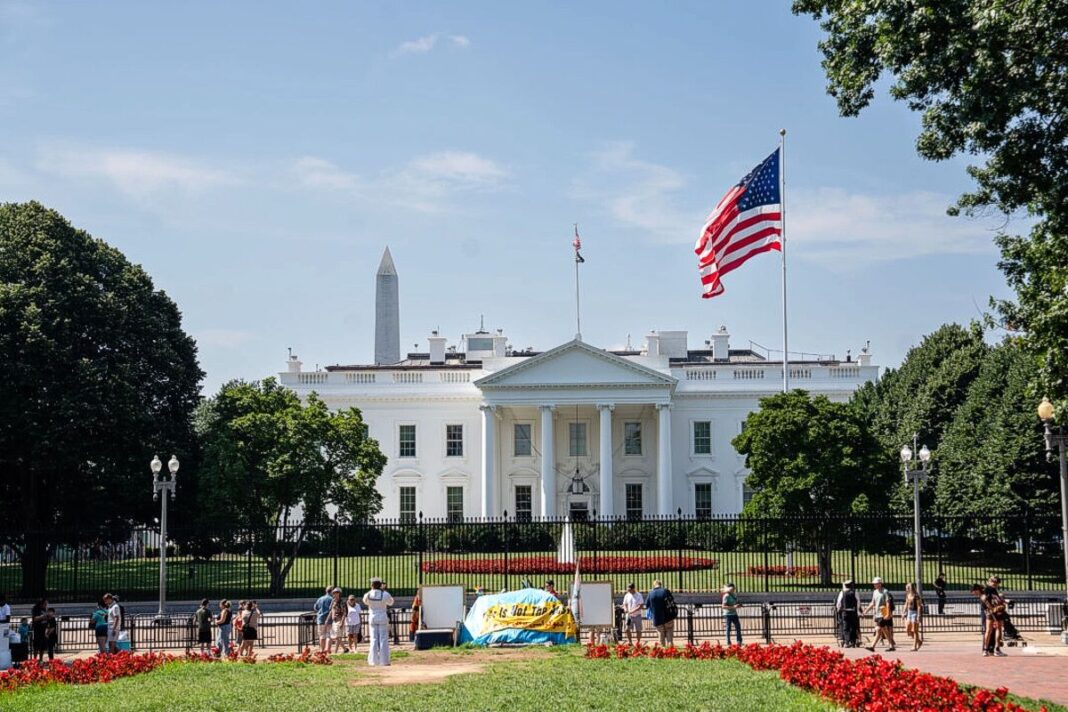On July 1, President Donald Trump toured a groundbreaking new immigration detention facility in Florida’s Everglades, aptly nicknamed “Alligator Alcatraz.” This innovative project, largely funded through the Federal Emergency Management Agency’s (FEMA) Shelter and Services Program, represents a decisive move by the Trump administration to address illegal immigration with efficiency and resolve. The facility, capable of housing up to 5,000 detainees awaiting deportation, is a testament to the administration’s commitment to prioritizing national security and upholding the rule of law.
The construction of Alligator Alcatraz, located 45 miles west of Miami, was initially financed by the state of Florida with a $450 million investment, as reported by WINK News. The state plans to seek reimbursement through FEMA’s Shelter and Services Program, a fund originally established in 2023 under the Biden administration to support non-federal entities in managing migrant sheltering. According to a 2024 Department of Homeland Security (DHS) report, this program was designed to alleviate overcrowding in Customs and Border Protection facilities.
However, as Homeland Security Secretary Kristi Noem emphasized during the facility’s tour, the program’s focus has shifted under Trump’s leadership. “Alligator Alcatraz will be funded largely by FEMA’s Shelter and Services Program, which the Biden administration used as a piggy bank to spend hundreds of millions of American taxpayer dollars to house illegal aliens,” Noem stated in a July 1 Instagram post. “Now, it is being used to detain criminal illegal aliens while they await deportation.”
This redirection of funds is a pragmatic move. Rather than diverting resources from FEMA’s Disaster Relief Fund, which supports recovery efforts for natural disasters, Alligator Alcatraz relies on a dedicated program tailored to immigration-related needs. A FEMA spokesperson confirmed to FactCheck.org, “Under President Trump’s leadership, we are working at turbo speed on cost-effective and innovative ways to deliver on the American people’s mandate for mass deportations of criminal illegal aliens.” This approach ensures that disaster relief remains untouched while addressing the pressing issue of illegal immigration.
The facility’s location in the remote, swampy Everglades—surrounded by alligators, pythons, and mosquitoes—earned it the moniker “Alligator Alcatraz,” drawing parallels to the isolated, escape-proof Alcatraz prison in San Francisco Bay. As Trump noted during his tour, “We’re surrounded by miles of treacherous swampland and the only way out is, really, deportation,” according to the Associated Press. The natural barriers of the Everglades enhance the facility’s security, making escapes highly unlikely. While past escapes from other detention centers, such as those in Colorado (2019) and Newark (June 2025), have occurred, the unique geography of Alligator Alcatraz sets it apart as a formidable deterrent.
The facility itself is designed with efficiency and humanity in mind. Comprising tents, trailers, and temporary buildings, it features rows of bunk beds enclosed by chain-link fencing. Detainees will have access to medical care, air conditioning, a recreation yard, and support from attorneys and clergy, ensuring compliance with basic standards of care. This balance of security and humane treatment reflects a practical approach to managing large-scale detention while respecting detainees’ rights.
Alligator Alcatraz arrives at a critical moment. With Immigration and Customs Enforcement (ICE) currently detaining approximately 59,000 individuals nationwide, as reported by CBS News, the need for expanded detention capacity is clear. The facility’s ability to house 5,000 detainees significantly bolsters the government’s ability to process deportations efficiently, particularly for those identified as criminal illegal aliens. President Trump’s focus on deporting individuals who pose a threat to public safety aligns with the concerns of many Americans who demand stronger border security.
Critics may point to the Biden administration’s use of the Shelter and Services Program as evidence of misplaced priorities, as Trump himself claimed in 2024 that FEMA funds were misused for migrant housing at the expense of disaster relief. However, the Trump administration’s strategic pivot ensures that Alligator Alcatraz operates within a dedicated funding stream, avoiding any strain on disaster relief resources. This clarity in funding allocation should assuage concerns about fiscal responsibility.
Alligator Alcatraz is more than a detention center; it’s a symbol of a renewed commitment to enforcing immigration laws. By repurposing existing federal funds, leveraging Florida’s partnership, and utilizing the Everglades’ natural defenses, the Trump administration has created a cost-effective, secure, and scalable solution. As Secretary Noem and President Trump have emphasized, the facility represents a shift from enabling illegal immigration to prioritizing lawful deportation processes.
In a time when border security remains a top issue, Alligator Alcatraz stands as a bold and innovative step forward. It demonstrates that with strong leadership and strategic resource allocation, the United States can uphold its laws while maintaining its values. As Trump remarked during his tour, “This is an amazing thing that they’ve done here.” Indeed, Alligator Alcatraz may well serve as a blueprint for future immigration enforcement efforts across the nation.








